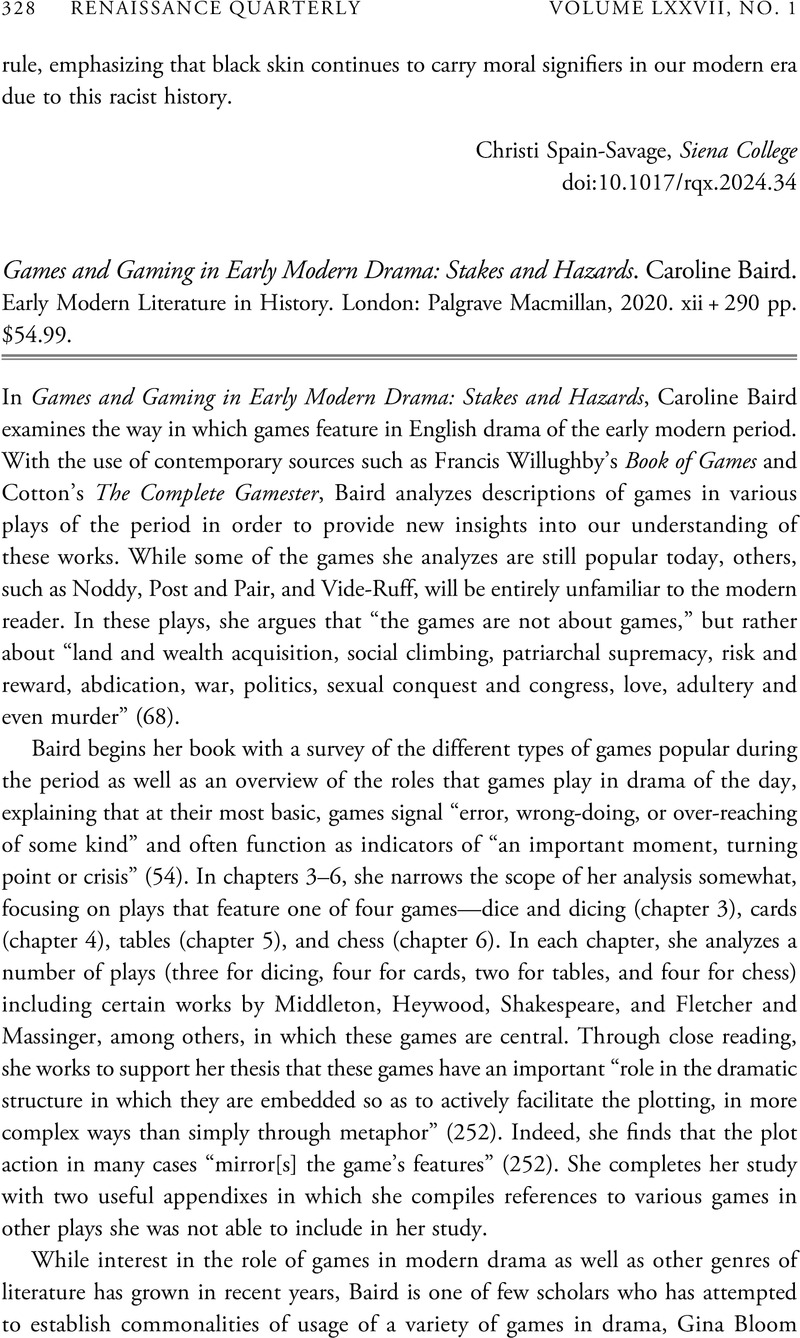No CrossRef data available.
Article contents
Games and Gaming in Early Modern Drama: Stakes and Hazards. Caroline Baird. Early Modern Literature in History. London: Palgrave Macmillan, 2020. xii + 290 pp. $54.99.
Review products
Published online by Cambridge University Press: 24 April 2024
Abstract

- Type
- Review
- Information
- Copyright
- Copyright © The Author(s), 2024. Published by Cambridge University Press on behalf of The Renaissance Society of America



